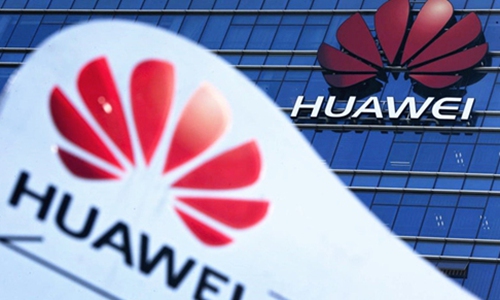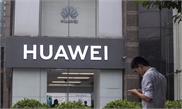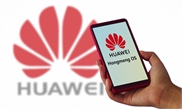Huawei may use graphene technology to expand battery capacity of P40 amid 5G race
Huawei likely to use graphene tech in P40

The logo of China's tech giant Huawei. Photo: Xinhua
Huawei is likely to upgrade the battery technology in its P40 smartphone, adopting graphene technology to expand its battery capacity upward of 5,000 mAh so that it could better accommodate power-guzzling demand in 5G networks, an industry insider told the Global Times on Thursday.The Chinese technology giant is expected to launch P40, the successor to the P30, in the first quarter of next year, according to media reports. The new device will be equipped with the Kirin 990 5G chipset.
As battery capacity is one of the key metrics that determine a 5G smartphone's performance, some bet that Huawei - which is under a US ban that could potentially cut off US parts and weigh on overseas sales - may introduce graphene technology in the new gadget to increase its competiveness and appeal to more 5G users.
Huawei's P30 series is powered by lithium batteries.
Currently, the maximum battery capacity of most smartphones in the market is about 4,000 mAh. US-based Apple's iPhone Pro Max has a battery capacity of 3,969 mAh - the biggest-ever battery Apple has loaded on one of its smartphones.
"A graphene battery above 5,000 mAh will give Huawei an edge in the increasing fiercely 5G competition, in particular outstripping foreign rivals," Xiang Ligang, an expert on the telecommunications industry, told the Global Times on Thursday.
The highly anticipated graphene battery, coupled with Huawei's newly developed 50W rapid-charging technology, will take only about 45 minutes to charge the device completely, industry website gizmochina.com reported.
Huawei achieved brisk sales in the third quarter of 2019. It shipped 41.5 million units in China, up 66 percent year-on-year, according to a report from Canalys.


